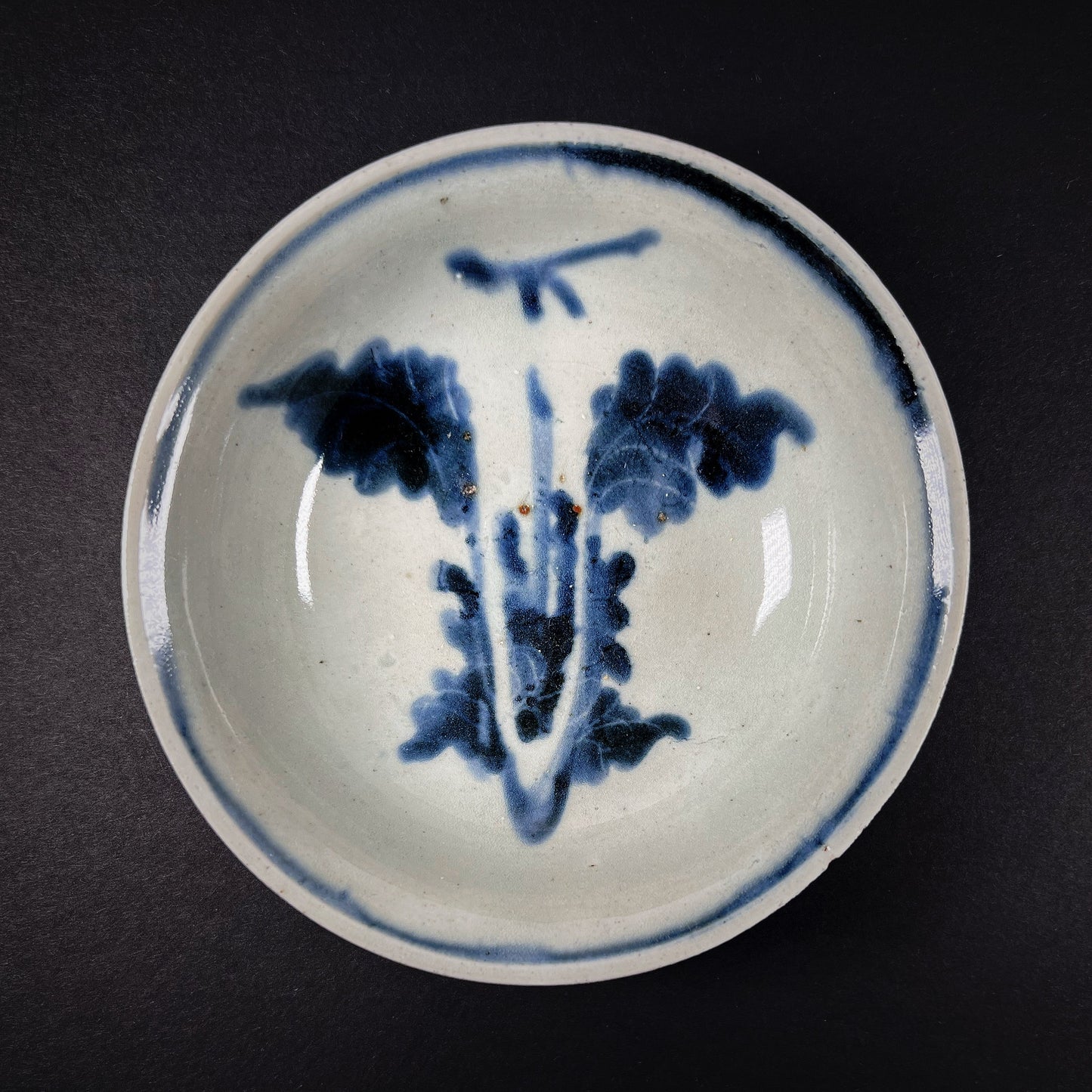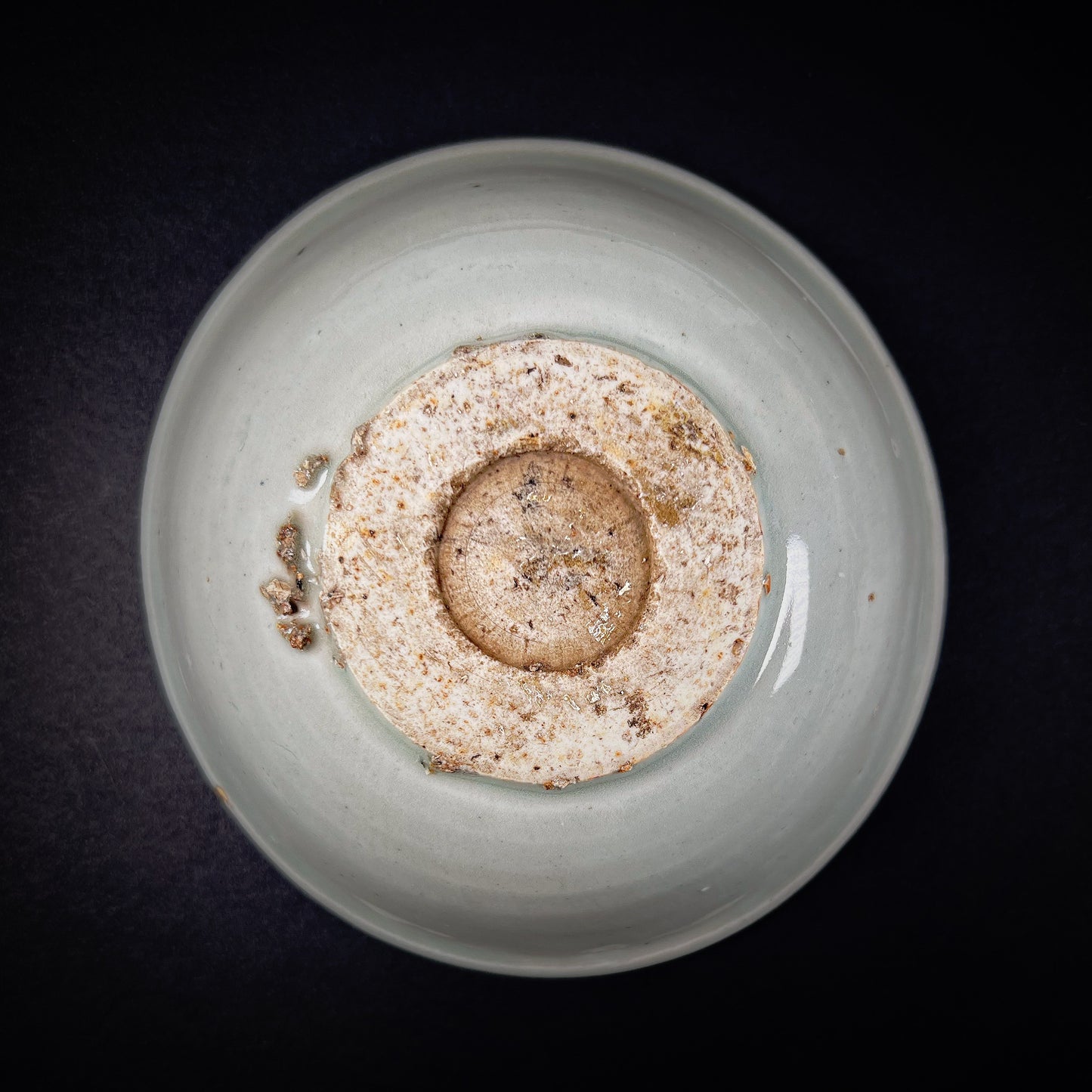Ming Dynasty Kosometsuke Ware Porcelain Bowl
Ming Dynasty Kosometsuke Ware Porcelain Bowl
Couldn't load pickup availability
Late Ming Dynasty, Wanli (1572–1620) or Tianqi (1620–1627) Period, Jingdezhen, Jiangxi Province, China
A charming and rare blue-and-white porcelain bowl, specifically crafted for the Japanese tea ceremony meal. This exquisite piece belongs to the Ko-Sometsuke ("Old Blue and White") tradition, a unique category of Chinese underglaze blue porcelain made in the unofficial kilns of Jingdezhen for the Japanese market during the reign of Emperor Tianqi (r. 1621–1628). Over the same period, Transitional porcelain was also being produced, yet Ko-Sometsuke wares stand out due to their eccentric, asymmetrical forms tailored to Japanese aesthetics.
This small-sized bowl is loosely painted with a stylized scene of Chinese cabbage (pak choi) and a butterfly at the center. The painting is executed quickly and fluidly, using a fully loaded brush, without outlines. Wax resist has been skillfully employed to render the delicate veins of the leaves, adding depth and texture to the composition.
Unlike the refined classical blue-and-white wares of Jingdezhen, Ko-Sometsuke porcelain was intentionally crafted with a coarser, less refined clay, resulting in numerous imperfections that were highly prized in Japan. These distinctive flaws include glazing irregularities, fritting, kiln grit on the footrim, and the characteristic "moth-eaten" edges (mushikui)—features that aligned with the Japanese wabi-sabi aesthetic, which values the beauty of imperfection.
The design motifs on Ko-Sometsuke ware typically feature landscapes, birds and flowers, animals, and human figures, often painted with a sense of spontaneity and asymmetry that appealed to Japanese tastes. This bowl, with its bold yet delicate brushwork, embodies the artistry and cultural exchange between Ming China and Edo-period Japan, making it an exceptional piece for collectors of Chinese and Japanese tea ceremony ceramics.
Good condition. Small chip in the rim. Fritting and glazing flaws. Kiln grit on the footrim. Size approx. 14,1cm x 13,9cm x 4,7cm.
Provenance: Finnish private collection
References and further reading:
Ko-sometsuke: Chinese Porcelain for the Japanese Market, Jorge Welsh, Published by Jorge Welsh Books, Lisbon/London, 2013.
Kosometsuke, Masahiko Kawahara, Published by Kyoto Shoin Co., Ltd, Japan, 1977.
The Wares of the Transitional Period between the Ming and the Ch'Ing 1620-1683, Soame Jenyns, Archives of the Chinese Art Society of America, Published By: Duke University Press, Vol. 9, 1955, pp. 20-42.
The Ceramic Trade Across the South China Sea c. AD 1350-1650, Barbara Harrisson, Journal of the Malaysian Branch of the Royal Asiatic Society, Vol. 76, No. 1, 2003, pp. 99-114.


-
Shipping
The shipment will be prepared in the course of 3-5 days and dispatched via Posti Group Oyj or purchased item(s) can be picked up from our shop during the store's opening hours (Tarkk’ampujankatu 4, 00140, Helsinki, Finland). Within the Finland, all items are shipped via Posti Group Oyj unless otherwise requested. We pack the items carefully and mainly in recycled materials because we want to save nature. You will receive the tracking number for your items by e-mail.
-
Returns
Returns and exchange will be accepted within fourteen days (14) of receipt at the purchaser’s cost to include freight and packaging. Items must be returned in the same condition as when they were shipped, and will not be accepted if damaged or altered in any way. Please inform us via email (info@gotanmaailma.fi) or by calling +358408408352 before sending. We do not accept returns more than 14 days after delivery.


